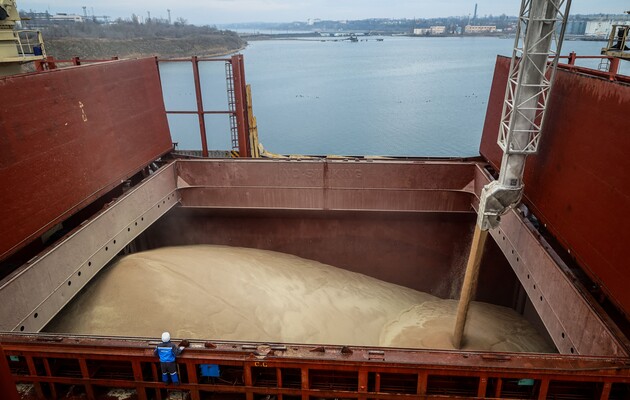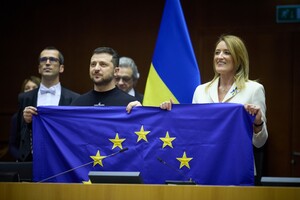How Come our Wheat is the Cheapest in the World

This story is full of paradoxes. First and foremost, despite the global increase in wheat prices and food risks for a number of countries, half of Ukrainian grain, which is so difficult to ship from the country, is exported with an incredible discount of 40 per cent.
While Ukraine desperately needing money for her fight and existence is looking for money wherever possible, there are those who rob her, as well as those who prefer not to notice these thefts. Companies that, availing themselves of the opportunity, export our grain too cheaply, underpay domestic taxes, return the country a minimum amount of currency revenue and also make a decent profit — they will sell the grain to themselves, and eventually, at normal market prices, to end buyers. The story is not a new one. But now, when Russian grain is sold at market prices, and the price of ours has fallen so much that it is cheaper for farmers not to harvest at all than to sell the grain, the state’s indifference to the problem is striking.
So how come our wheat is the cheapest in the world?
The economic theory is unequivocal: with limited supply and constant demand, the price of goods increases. Well, in theory this is our situation. The supply is limited, because this harvest in millions of tons was 48 per cent less than the previous one, and the blocking of most seaports significantly narrowed the possibilities for its export. Demand was more than constant: from the first days of the large-scale invasion, the world was concerned about food security and the risk of famine in Africa and the Middle East. The fear was so extreme that India, Hungary, Georgia, Azerbaijan, Kazakhstan and even the Russian Federation suspended grain exports in 2022 for the sake of internal food security. World prices, classically, broke all records (see Fig. 1), but not in Ukraine.
We analyzed Ukrainian wheat and corn export data from July to November 2022 and couldn’t believe our eyes – the average price of half of Ukrainian wheat turned out to be about 40 per cent lower than the average price on the global market, and the price of Ukrainian corn was about 30 per cent lower. And this is after all those alarmist statements that without Ukrainian bread, the world is threatened with famine.
For instance, with the average price of wheat on the global market at USD 362. we sold it to Egypt for an average of USD 216 per ton, to Turkey for per ton 200, and – most surprisingly – to Greece for USD 176. (See Fig. 2). And this is the average price because there were deliveries of both USD 100 and USD 50. The situation with corn is similar, only the discount is slightly lower: at the average global price of USD 320 per ton Egypt received the grain at a price of USD 212, Bulgaria – at USD 209, and Türkiye – even at USD 175 per ton. (See Fig. 3). On top of that, the same corn was exported from Ukraine for USD 100 and 50.
Of course, the average price is a dubious indicator, because in foreign trade, the terms of the contract determine the final price. And this is our second paradox — the price of Ukrainian grain is not determined by the supply conditions. Somewhere in general in the array of data one may notice that sea freight is cheaper than railway shipping, and railway is cheaper than truck shipping. In addition, under DAP conditions, that is, when all the risks of delivery are borne by the seller, the price will be slightly higher, and under CIF conditions, when the seller only has to deliver the goods to the vessel, the price will be lower. But there are so many exceptions to each regulation that it is even not possible to call them “rules” (see Fig. 4).
For example, let’s analyze two identical shipments of wheat to Spain, the type of wheat is identical, the terms of delivery are DAP, logistics is organized by sea, the volume is about 6,000 tons, but in one case the price is USD 162 per ton, and in the other one it’s USD 65. Another example is corn shipped to Romania: the terms of delivery are FOB (all costs and risks are borne by the buyer once the goods are loaded onto the ship), logistics is organized by sea, the volume is about 4–5 thousand tons. In one case, the price is USD 207 per ton, in another one it’s USD 135, and in the third case it even equals USD 94. The situation is no better with shipment by motor vehicles: if we look at wheat supply to Türkiye with FCA terms of delivery (all risks are borne by the seller) and volume of 1.5–2 thousand tons, we can see that the prices vary from USD 140, 135, to 70 per ton. Indeed, the general trend is obvious: our prices, be that as it may, are significantly lower than the world average, but there are no market explanations for this.
Well, we submitted a request to the Ministry of Agrarian Policy and Food of Ukraine, hoping that at least there is an understanding of what is actually happening with the grain.
And here is the main paradox: Ukraine is a raw material economy, export-oriented and highly dependent on foreign exchange earnings, but the prices at which our raw materials are exported are of no interest to anyone here.
In response, we received a lecture on the basics of pricing from the specialized ministry (see the document). We were told that logistics is broken and expensive, that fertilizers and fuel have also risen in price, that there is a shortage of equipment, and that the risks are growing immeasurably. It’s just not clear why all over the world, when the producer’s costs increase, he includes them in the final price and the product becomes more expensive, while in Ukraine, on the contrary, all the listed additional costs are the reason for the price reduction of grain! The general impression of the indifference of the specialized ministry is infuriating, but in reality, the problem of the export value of our grain is really not their business. It is also not the business of the customs, because it is mostly interested in import operations and customs duties. Finally, it is not even the area of the tax office, which monitors transfer prices, because such control is based on the so-called arm’s length principle. That is, the price in your deal should not be significantly different from the price in deals comparable regarding other terms of sale. On the arrhythmic fig. 4 the “arm’s length principle” will easily reach both the price of USD 150 and the price of USD 300. This makes life much easier for both exporters and their controllers, but hardly meets the purpose of price controls, that is to counteract the reduction of income tax payments.
Moreover, not only unpaid income tax is important to the state and to us, but also the amount of foreign exchange revenue, on which the exchange rate of the hryvnia depends, and the amount of foreign exchange reserves that the NBU must “burn” in the fight for exchange rate stability.
The recent tax changes, which combat the non-return of currency to the country, require the exporter to deposit a certain percentage of the value of the sold goods. After the currency is returned to Ukraine, the deposited funds are returned to the exporter in full, and in the case of a partial return they are given back in proportion to the returned amount. A kind of guarantee, the amount of which is calculated – what a surprise! – on the basis of payments for the previous six months of work. If in these months the prices in your contracts were at rock bottom, and they really were such, then both your deposit and claims from the state will be minimal, and working capital will not be kept on the deposit, but work. Grain traders do benefit, however, others do not.
Low prices for Ukrainian grains harm the domestic market. Okay, grain exporters are traders, their work is needed, they bear all the risks and a significant part of the costs, know the world market, have a reputation as a reliable supplier, but the essence of trading is to buy cheaper and sell more expensive. Grain producers are people who bear all internal risks, from weather to war, all costs of seed, fuel, labor, and storage. Their goal is to earn enough to allow the next crop, with a reservation regarding the shortage of everything needed and inflation at the rate of 26 percent. Obviously, producers are on the losing side if traders are on the winning side. And now, due to logistical problems, it is so difficult to sell grain that they are forced to accept any conditions so that it simply does not rot.
Low prices for Ukrainian grain harm the foreign market. Polish farmers are blocking trucks from Ukraine, because Ukrainian grain “has caused domestic prices collapse and farmers are forced to work with no profit.” Poland, Slovakia, Hungary, Romania, and Bulgaria submitted a request to the Council of Agriculture Ministers of the EU regarding the introduction of duties on Ukrainian grains, because the economies of the countries are suffering from their surplus – during 2022, wheat imports to the EU have tripled. On January 30, the first meeting of the Council was held, the processes have been launched. And the search for reasons for restrictions on quantity has been spread to quality as well. “The standards of mycotoxins in Ukrainian corn are exceeded 10 times,” “Hungary will check the growing conditions of Ukrainian grain,” “Poland will check Ukrainian grain for pesticides” – such and similar headlines are now familiar to European media outlets, and it is only a matter of time when the grain “corridors of solidarity” will narrow to clefts.
So, bringing order to pricing is primarily our national interest, no matter how much one wishes to refer to the “invisible hand” of the market. Probably, something is wrong with our hand, if the market behavior of the same traders in the EU and Ukraine is fundamentally different. As longtime lovers of best practices, our statesmen could address them. Perhaps, for example, we would look closely at the “interventionist” experience of the EU: the producer is guaranteed to receive give or take the market price for the grain, because it will be bought not by a trader, but instead by an intervention center, taking the responsibility for all the further issues and covering possible losses with export subsidies. Oh my, these are the expenses, those in high offices might say. Still, what is better – possible expenses during market fluctuations, but the protection of your producers, or the guaranteed loss of currency and taxes and defenselessness of your producers?
In five months of last year, we sold almost 4 million tons of grain at half the average market price, losing about 550 million dollars of currency revenue. The International Bank for Reconstruction and Development allocated the same amount to us last year for salaries of teachers and doctors and support for the poor and IDPs.
Regulation seems to be something we are sorely lacking after all. Even the rule on currency deposit by exporters was introduced in our country only for the period of the war, although it seems to be designed to solve the global issue of returning currency to the country. We will not mention the rest of the initiatives, which are usually aimed at direct price regulation, sincerely hoping that at least the current crisis will stimulate both the initiative and the breadth of imagination of our government officials.
Read this article in russian and Ukrainian.
Please select it with the mouse and press Ctrl+Enter or Submit a bug


















 Login with Google
Login with Google